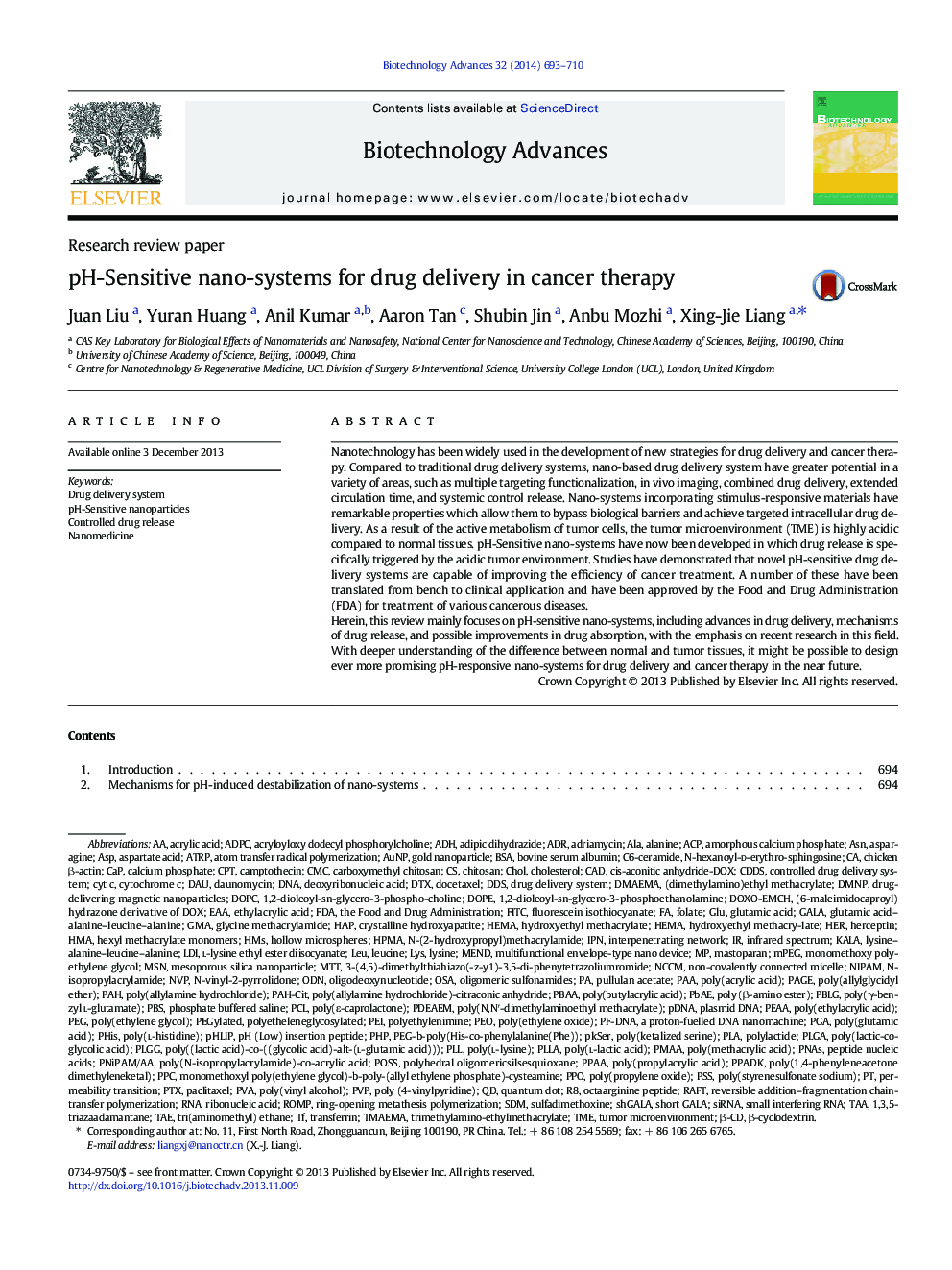| Article ID | Journal | Published Year | Pages | File Type |
|---|---|---|---|---|
| 14268 | Biotechnology Advances | 2014 | 18 Pages |
Nanotechnology has been widely used in the development of new strategies for drug delivery and cancer therapy. Compared to traditional drug delivery systems, nano-based drug delivery system have greater potential in a variety of areas, such as multiple targeting functionalization, in vivo imaging, combined drug delivery, extended circulation time, and systemic control release. Nano-systems incorporating stimulus-responsive materials have remarkable properties which allow them to bypass biological barriers and achieve targeted intracellular drug delivery. As a result of the active metabolism of tumor cells, the tumor microenvironment (TME) is highly acidic compared to normal tissues. pH-Sensitive nano-systems have now been developed in which drug release is specifically triggered by the acidic tumor environment. Studies have demonstrated that novel pH-sensitive drug delivery systems are capable of improving the efficiency of cancer treatment. A number of these have been translated from bench to clinical application and have been approved by the Food and Drug Administration (FDA) for treatment of various cancerous diseases.Herein, this review mainly focuses on pH-sensitive nano-systems, including advances in drug delivery, mechanisms of drug release, and possible improvements in drug absorption, with the emphasis on recent research in this field. With deeper understanding of the difference between normal and tumor tissues, it might be possible to design ever more promising pH-responsive nano-systems for drug delivery and cancer therapy in the near future.
